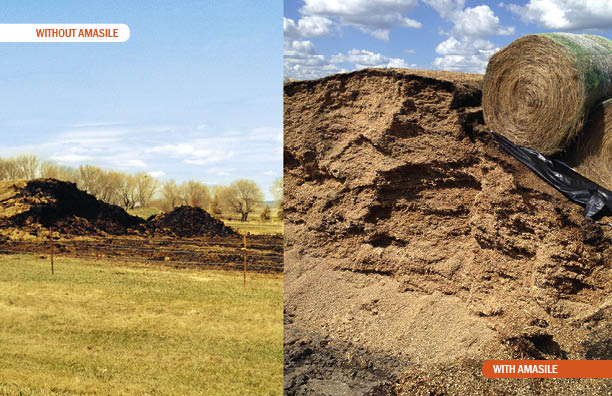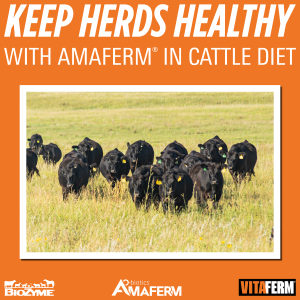 Silage is a staple in many livestock rations. However, if not fermented properly, silage can lose valuable energy, protein and fiber components that are often destroyed during the ensiling process.
Silage is a staple in many livestock rations. However, if not fermented properly, silage can lose valuable energy, protein and fiber components that are often destroyed during the ensiling process.
BioZyme® Inc. has developed a natural silage additive called AmaSile™ which is scientifically formulated to reduce the time required by silage to properly ferment, minimize nutrient loss and reduce spoilage by undesirable bacteria.
“AmaSile works to stimulate the growth and development of beneficial microorganisms that speed up and stabilize the fermentation process,” said Dorothy Orts, Area Sales Manger for BioZyme. “The results are a stable, highly palatable and more digestible silage that promotes feed and energy intake and improves animal performance. Producers who use it appreciate how cool the silage stays right after chopping and how fresh it remains until the pile is gone.”
AmaSile works to:
- Preserve more nutrients and dry matter
- Support lactic acid bacteria
- Improve anaerobic ability
- Lower pH
- Improve shelf life
- Reduce heating/spoilage
In ideal conditions, lactic acid bacteria grow rapidly by utilizing the sugar in fresh forage. These bacteria are very efficient and quickly use the sugar to produce lactic acid. The production of lactic acid lowers pH levels of silage and protects it from unwanted microbial growth, such as molds and Listeria monocytogenes during fermentation. AmaSile contains metabolites produced from a proprietary fermentation product, and, unlike silage inoculants, does not contain live microorganisms and therefore remains stable throughout storage and application.
According to a research trial conducted by Dr. Chlou Keh-Ming of National Chung Hsing University in Taiwan, cows fed corn silage treated with AmaSile during the summer exhibited greater dry matter intake, an average milk increase of 3 lbs., and increased weight gain than the control group fed untreated silage. The winter trial showed lower dry matter intake with 3.5 lbs more milk and increased weight gain. Corn silage treated with AmaSile also exhibited a lower pH, a higher percentage of lactic acid, a lower percentage of acetic and butyric acids, decreased NDF (Neutral Detergent Fiber) and ADF (Acid Detergent Fiber), and a higher percentage of crude protein and protein fraction A, according to the trial results.
“These findings are significant,” said Kevin Glaubius, BioZyme Director of Nutrition and Technical Sales. “When forage tests high in ADF, its digestibility decreases, thus reducing the animal’s nutrient and energy intake. Equally important are the NDF values, which reflect the amount of forage the animal can consume. When NDF percentages elevate, dry matter intake generally decreases. AmaSile has been proven to reduce ADF and NDF values in silage, which are proven to improve feed intake and animal performance.”
AmaSile can be used on any forage, in any storage area including piles, bags and pits. The recommended application is 1 ounce per ton of treated silage. AmaSile is available in a 2.5 gallon size, which can treat up to 320 tons.
Cory Burkle of Burkle Ranch in Fredonia, ND used AmaSile on his 2014 silage, but didn’t realize how much of a difference the product made until he compared it to his 2015 pile, which he did not treat with AmaSile.
“There’s absolutely no comparison between the older pile and the new, untreated pile,” said Burkle. “There is only about a six-inch crust on the 2014 pile and at least 12 inches of waste on the untreated 2015 pile. The quality of the two silage piles is way different too. The AmaSile pile smells much sweeter, not burned at all like the 2015 pile. Not using AmaSile last year proved to me what a great investment the product is in feed quality and waste.”


